The morning after the wonderful day spent with three French women, I woke up sufficiently early to see the street lights still on, although we were well into the day.
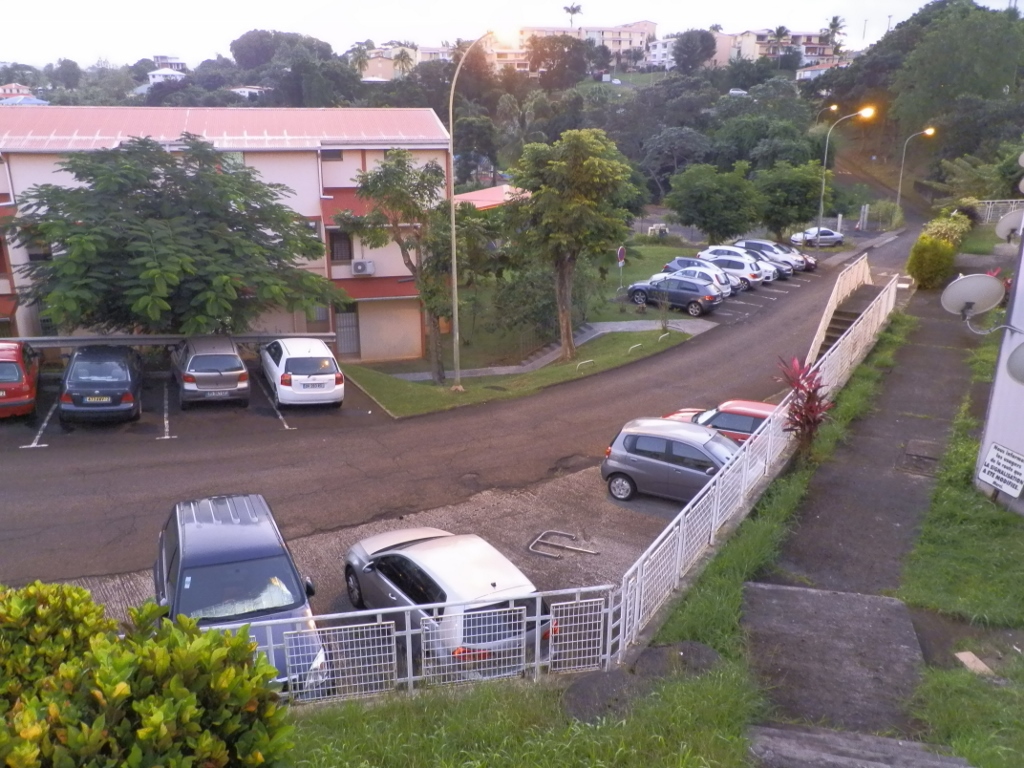 View at the surroundings from my room on Martinique
View at the surroundings from my room on Martinique
My plan for this day was to visit the southwest part of Martinique, but this time alone. Of course, I realised I would have to hitch-hike.
I planned to do this hitch-hiking from one place to the next and from one beach to the next, and it actually functioned quite well. Soon I got into it and it really felt silly to spend an hour waiting for a taxico, i.e., for a public share taxi. I thought, if it arrives – perfect, but if not, it was quite ok to move like this to the place I wanted.
Thus, already in Ducos I hitch-hiked a girl whom I asked to drop me at the place on the main road where two days earlier I had waited for a taxico, but it turned out she was going further in the direction I was interested in, so I covered a few additional kilometres with her. We parted cordially and I took up a position at a taxico stop waiting for whatever came first – either public transport or somebody to give me a ride.
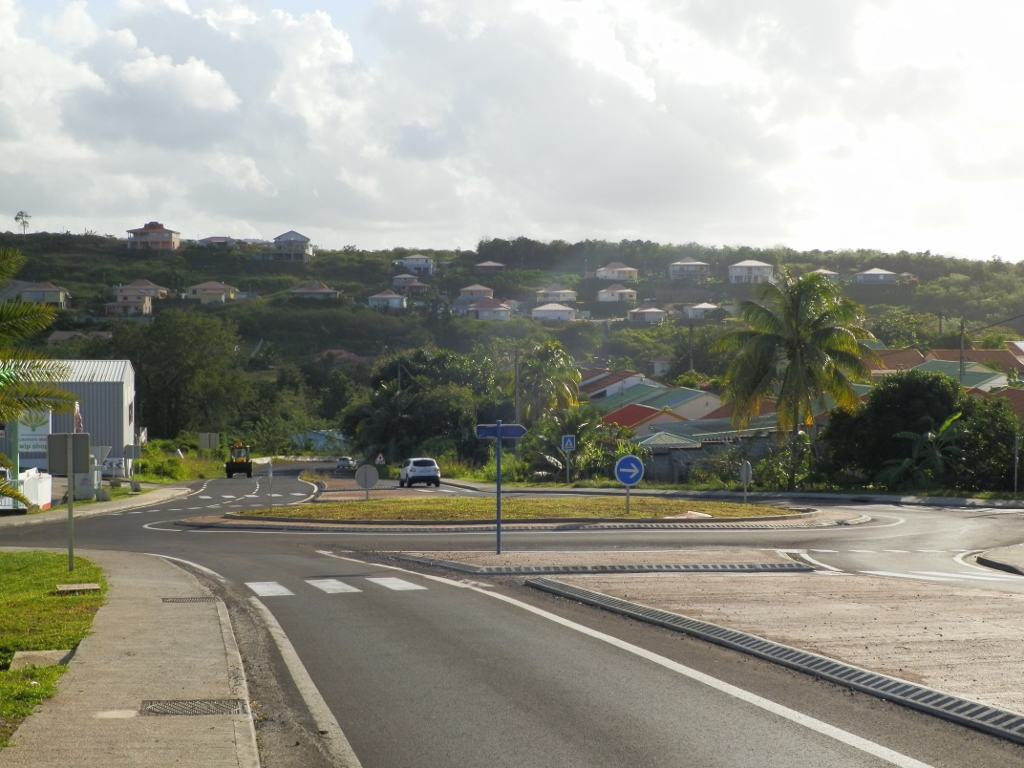 One of the numerous crossroads on Martinique; I’m waiting for some transportation to come by
One of the numerous crossroads on Martinique; I’m waiting for some transportation to come by
I must emphasise that I am not used to hitch-hiking at all and it is absolutely not my habit. However, while I was standing here, waiting for somebody to give me a lift, I saw an elderly lady who had a walking stick in one hand and who was hitch-hiking herself. This calmed me down completely and I thought: “Well, if she can do it, so can I.” One just needed to be patient.
So I had to hitch-hike in stages, since the rides were short, and at one point I had to stand at a crossroad for a while since nobody was passing by, in other words I waited a little longer there. Still, at some point a driver stopped and thus I reached village Les Anses d’Arlet. This village is situated on a hill and I only briefly walked there, after which I went down to the sea.
Les Anses d’Arlet means “the coves of Arlet,” since along the shore there are three coves that belong to the village. By the way, I’m using the word cove here in terms of a small coastal indentation, smaller than a bay.
So, when one descends from the village on the hill to the sea, one first comes across the Grand Cove, i.e., Grande Anse and I did plan to go there, but the driver that had picked me up actually took me to the next cove and that was Anse Chaudiere.
There I also walked around a little, taking photos. To start with, I went to the beach first.
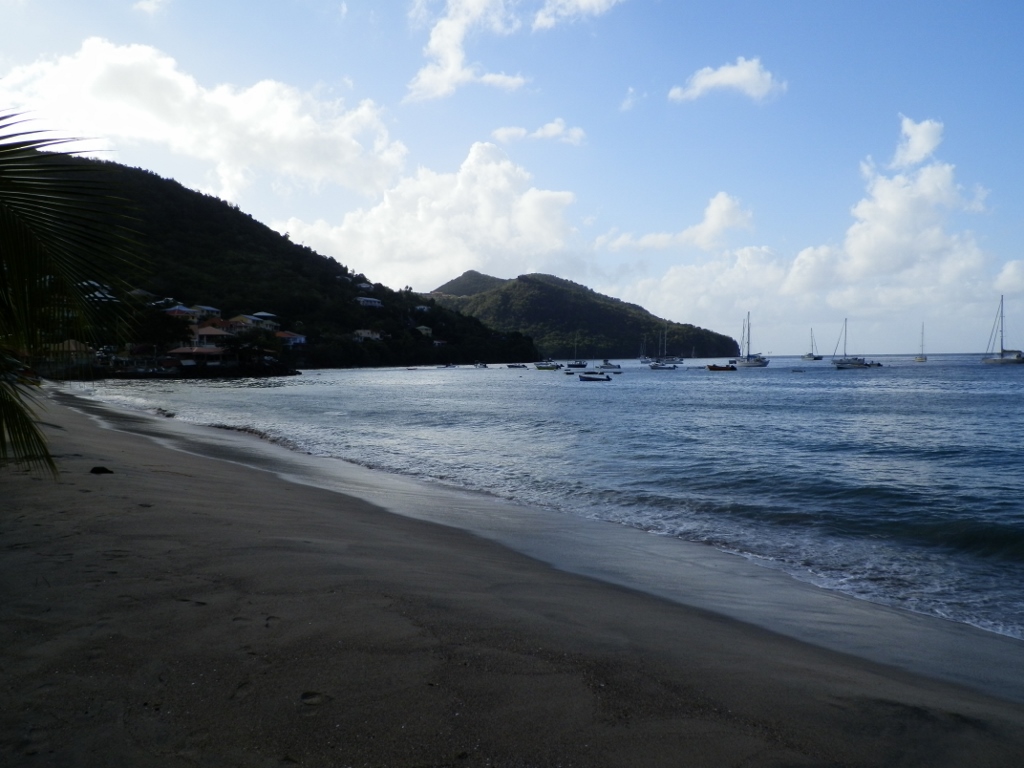 Anse Chaudiere beach
Anse Chaudiere beach
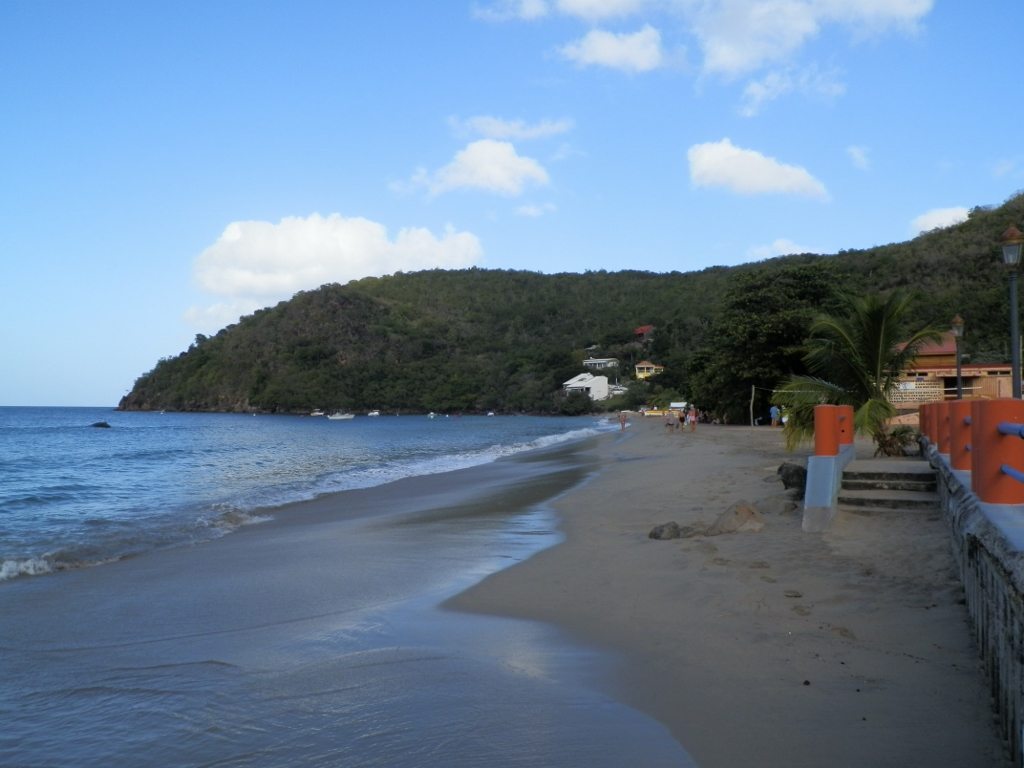 Anse Chaudiere beach
Anse Chaudiere beach
When I was looking for something about this beach on the internet, I was absolutely flabbergasted when in the photos I saw beautiful, whitish sand and turquoise colour of the water. As it may be seen in the previous two photos, this was not the situation at all on that morning when I was at Anse Chaudiere. Admittedly, in January 2016, on the spot, I was not too surprised since I had already read somewhere that there were over 200 nuances of sand colour, on account of the volcanic origin of the island, so I just thought it was one of those dark nuances that otherwise dominate the colour palette of Martinique’s sand. On the other hand, it had rained heavily the night before, so the sand was still wet and gave this darker colour, but still...
In this part of the village of Les Anses d’Arlet, beside the shores of Anse Chaudiere, there is the Church of Saint-Henri des Anses-d’Arlet which was declared the historical monument at the end of the 20th century. The first church in this place was built in the second half of the 17th century, but many a hurricane has blown here since then and thus the church has been repaired and restored numerous times, and concretely the tower seen in the photo below was built in 2008.
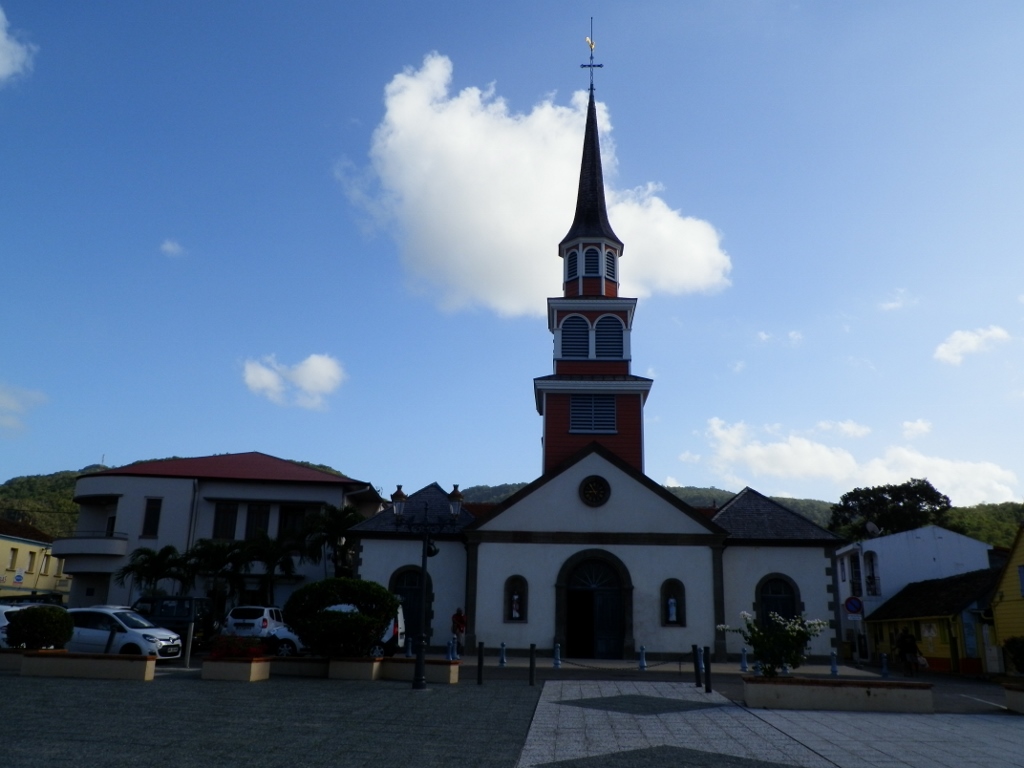 Church of Saint-Henri des Anses-d’Arlet
Church of Saint-Henri des Anses-d’Arlet
Right beside the church I noticed an interesting-looking house that displayed a memorial plaque. The plaque mentioned the British invasion of Martinique at the beginning of 1762, but I did not quite get the connection between the house and the event, so I did not go any further into these historic events. After all, this is something between the British and the French. The point is that Martinique was returned to France in 1763 after the signing of some peace agreement.
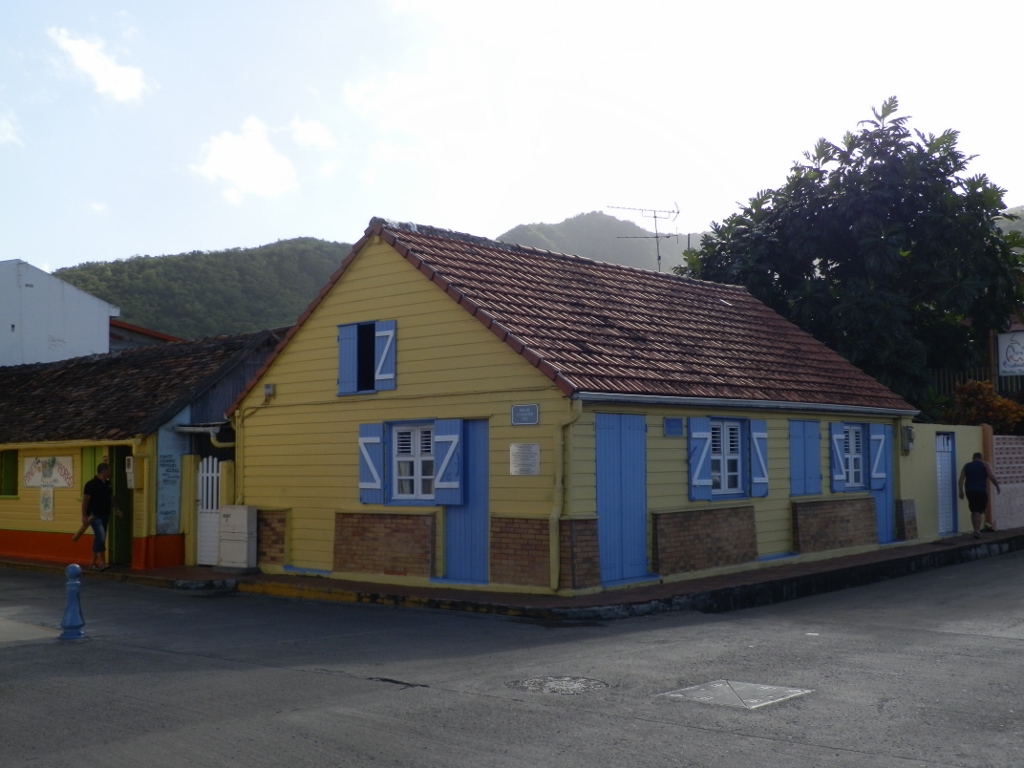 Picturesque house with the memorial plaque
Picturesque house with the memorial plaque
Instead I walked a little along the streets of this part of the village and so I got to the back section of the church that was nicely lit by the Sun.
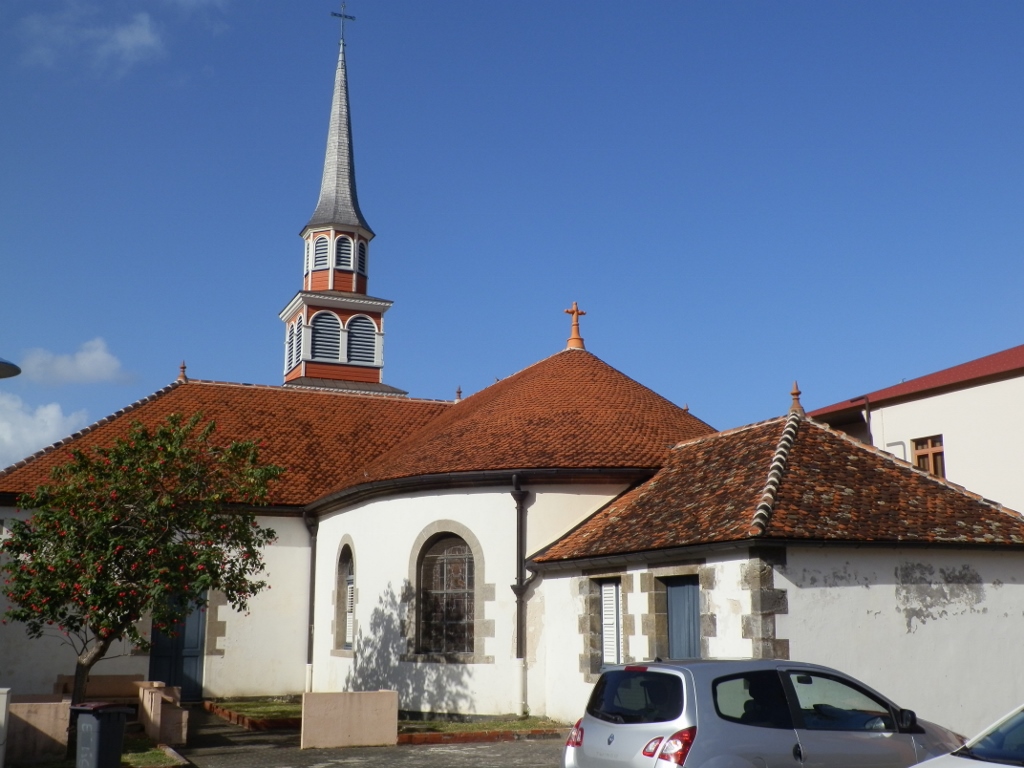 Back section of the Church of Saint-Henri des Anses-d’Arlet
Back section of the Church of Saint-Henri des Anses-d’Arlet
After this short walk I decided to return to Grande Anse, practically the first cove in the line of three when looking from the north to the south, with all three belonging to village Les Anses d’Arlet. Since there were not many cars passing through the settlement at that time, I started to walk slowly – after all these two coves are only 1,5 km apart, so it was not inconceivable to cover the distance on foot.
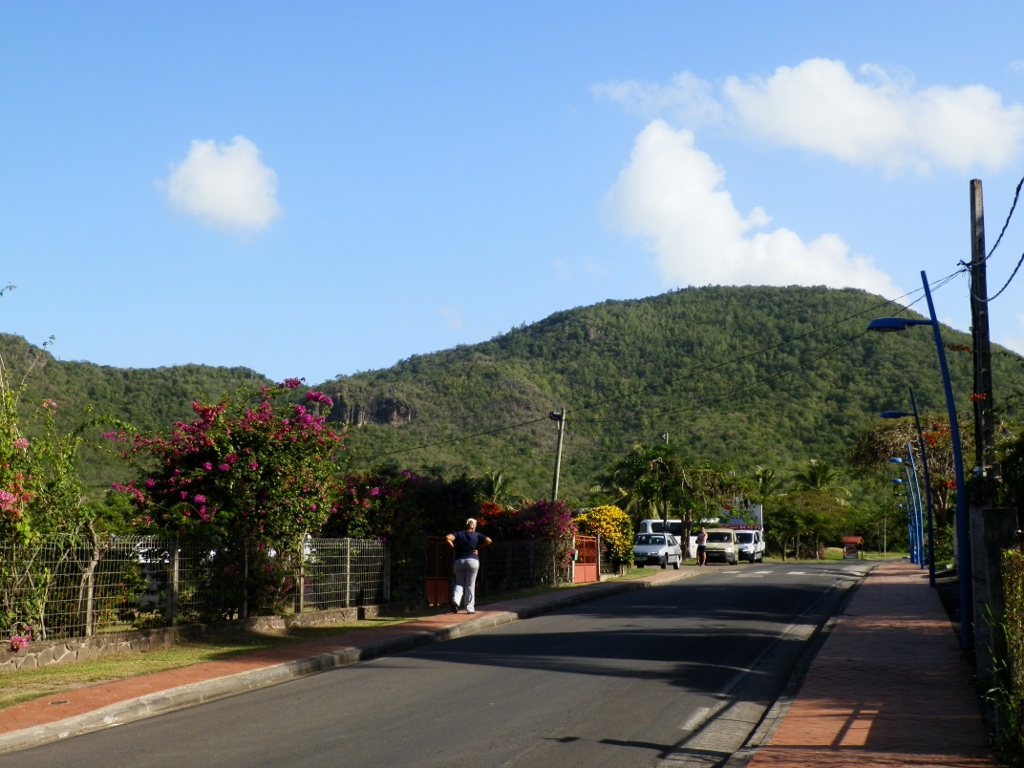 Outskirts of the settlement beside Anse Chaudiere early in the morning
Outskirts of the settlement beside Anse Chaudiere early in the morning
Still, a car did come by and thus I hitch-hiked my way to Grande Anse d’Arlet, but I actually did not feel like swimming and getting into the water at all. The beach itself was pretty – it was not crowded at all, the Sun was rising slowly behind the tops of palm trees, warming up the air and shining on the sand that was of a relatively light colour, but... when I approached the water it was murky since the ripples kept lifting the sand from the bottom, giving the water a muddy appearance and it all seemed greyish-brownish and consequently quite unattractive, as if I were on a river beach. I simply wondered: where were the tropics and the tropical impression?
I was additionally not attracted since there were quite a lot of sailing-boats parked in the cove, which also meant that there was oil, gasoline or whatever in the water. On the other hand, these beaches are often the places from which scuba-diving and snorkelling excursions start, which is a big business here, especially around Christmas, New Year’s and in January when the season is at its highest. Sometimes, there is so much interest that the bookings need to be made a couple of weeks in advance. Thus I saw a group of scuba-divers who were getting into the water with their equipment going towards a boat that would take them to the place for the diving.
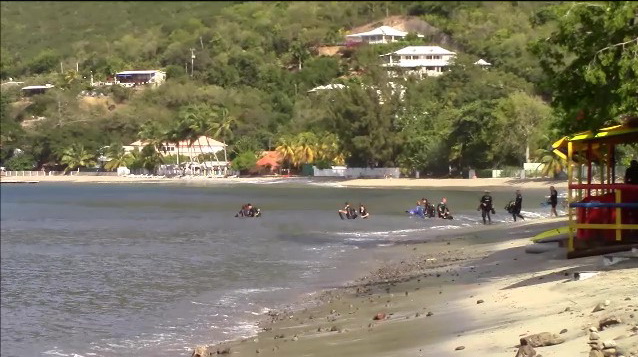 Divers in Grande Anse d’Arlet
Divers in Grande Anse d’Arlet
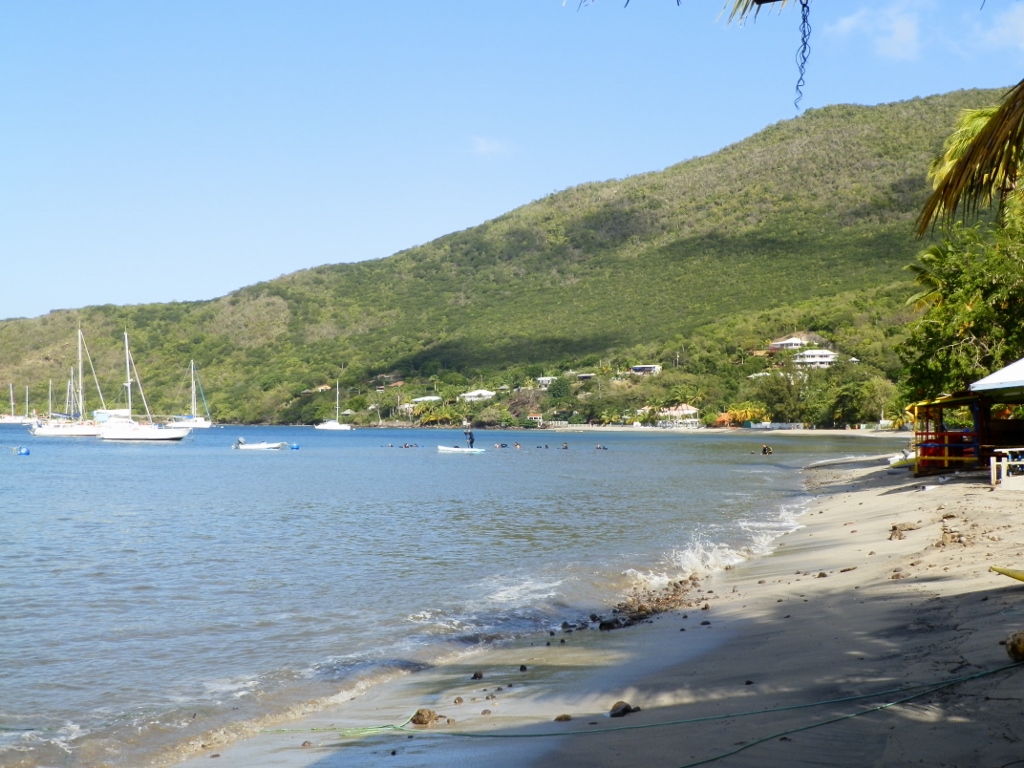 Grande Anse d’Arlet
Grande Anse d’Arlet
I continued walking along the beach and so I came to the boat dock around which there were several beach-beds for swimmers and tourists, and it all looked quite nice actually, but I still did not feel any inspiration to go into the water. I am probably also very spoiled.
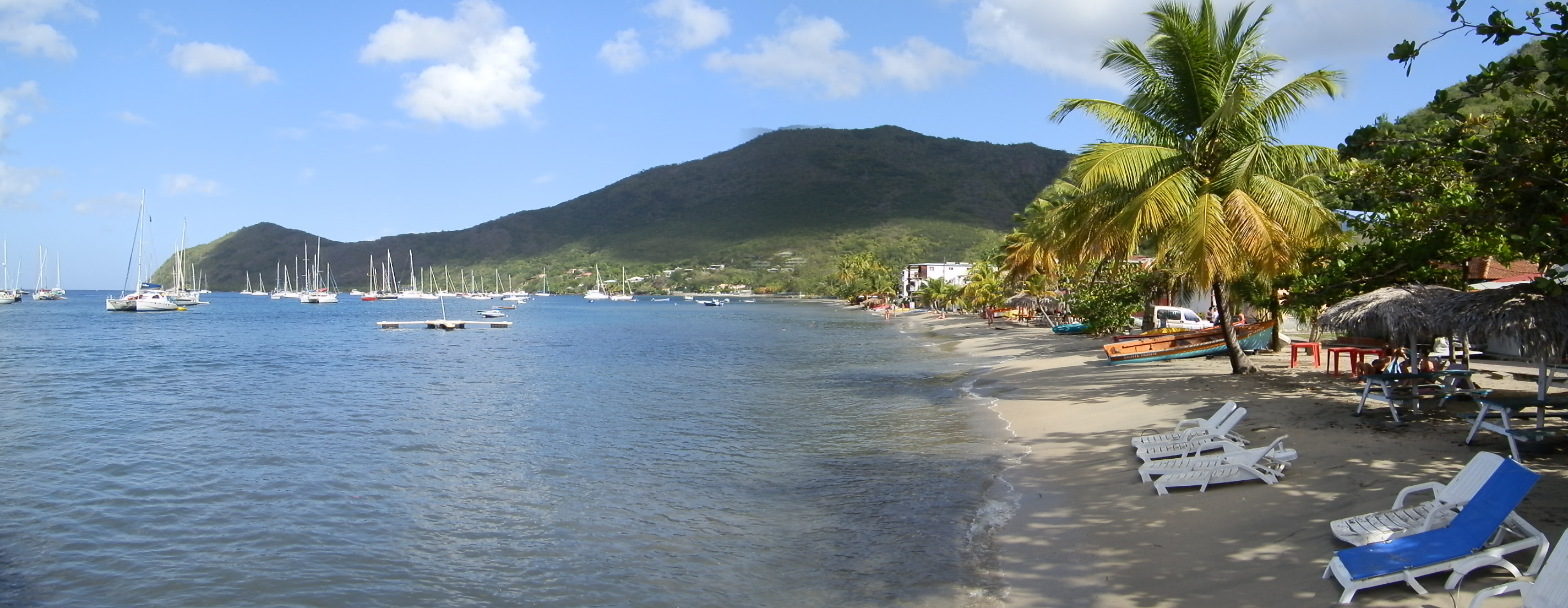
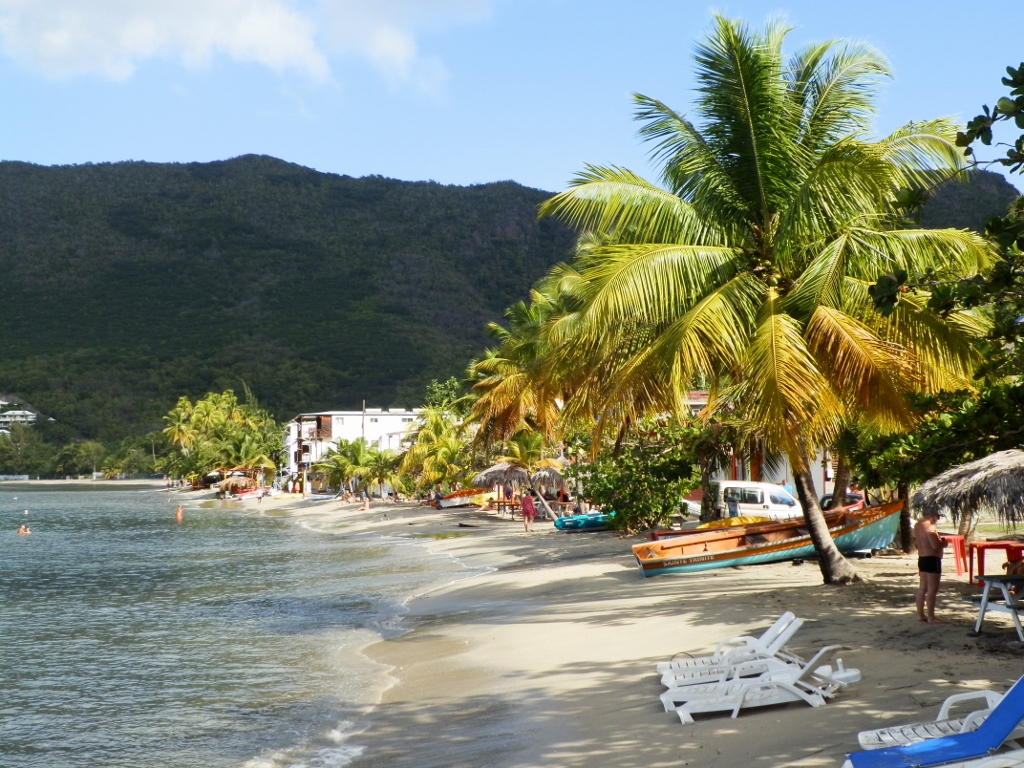 Grande Anse d’Arlet
Grande Anse d’Arlet
When I looked to the other side from the boat dock, I saw a part of the cove and beach that was separated from this larger section by some rocks and vegetation (as if it were a separate beach) and that part certainly seemed nicer.
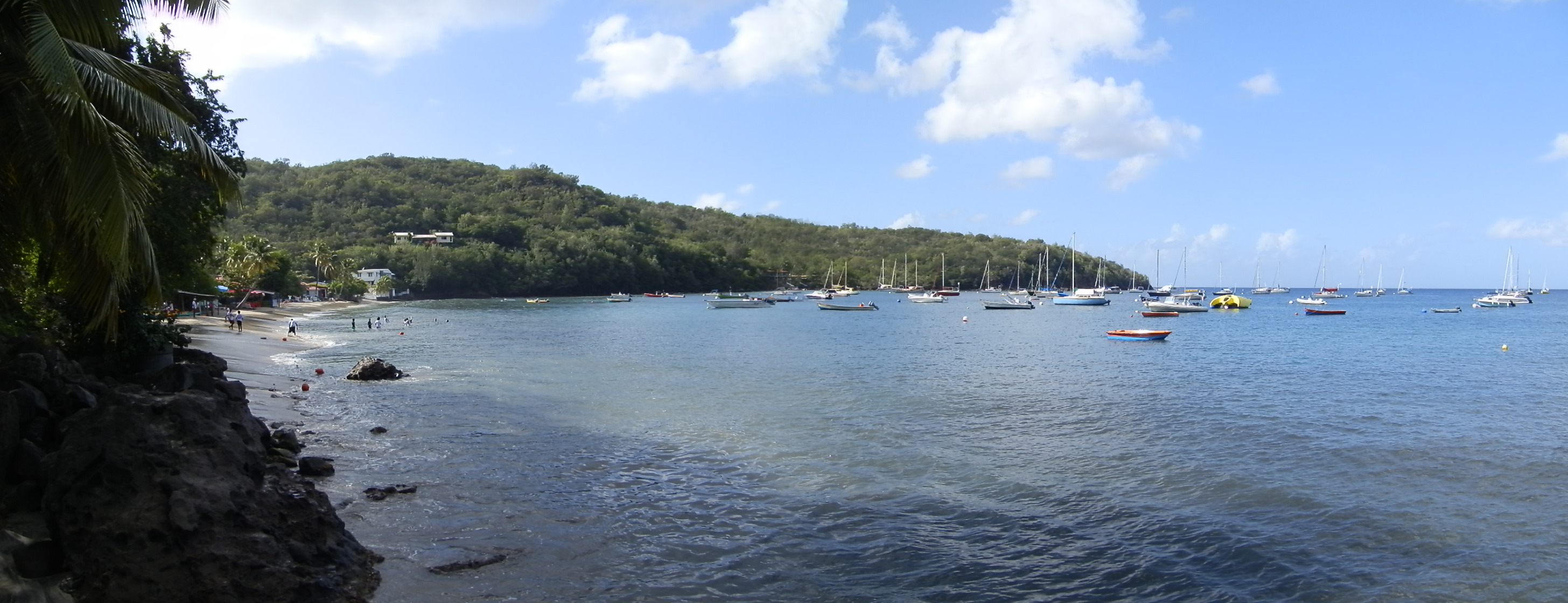
As I was getting to that part of the cove, I could see a group of young people going for a kayak ride, but I found it more interesting to concentrate on the beach itself.
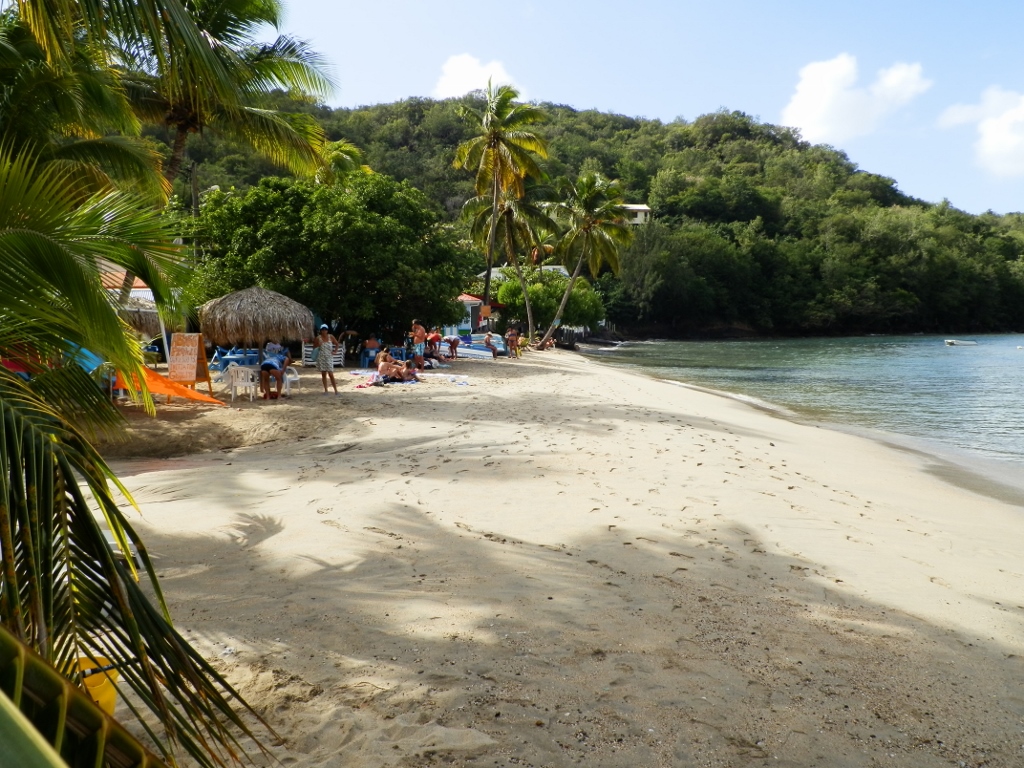 Grande Anse d’Arlet
Grande Anse d’Arlet
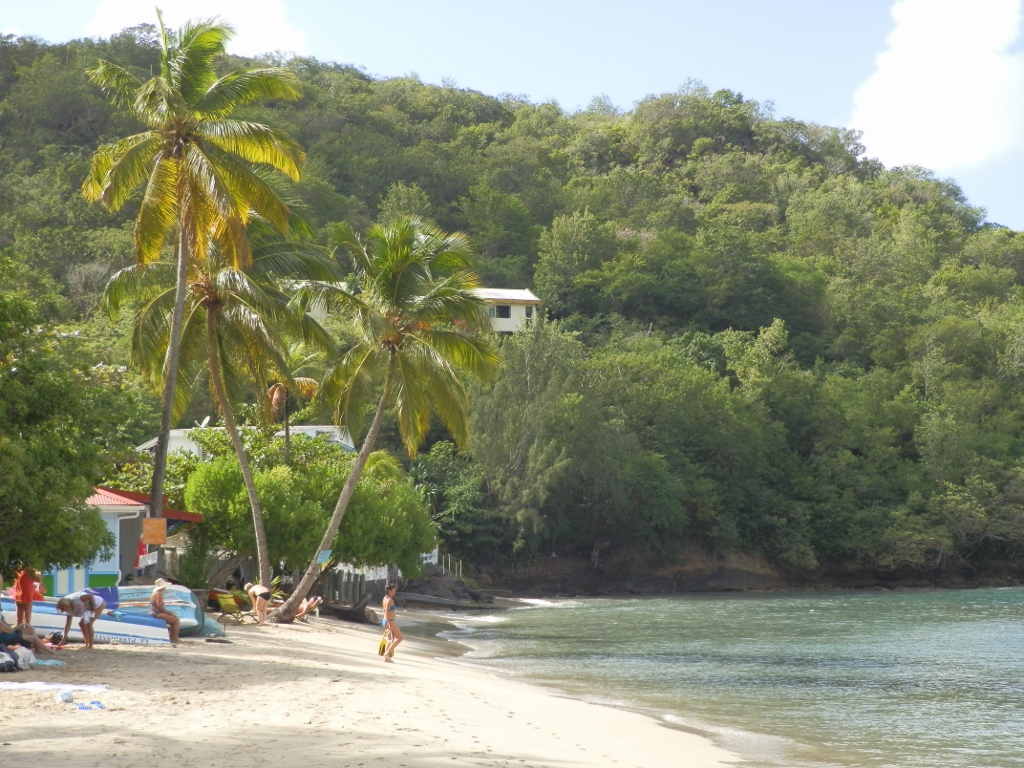 Grande Anse d’Arlet
Grande Anse d’Arlet
When I finished with my walk along the beach of the Big Cove of Arlet), i.e., Grande Anse d’Arlet, I went to the main street and waited there a little before a car stopped. The driver was a girl who had recently got a job at a boarding house right in my next destination, so she was driving there. She parked the car at the place where she worked, I thanked her and we parted there. From the main road, I followed a street that took me down to yet another cove that belongs to village Les Anses d’Arlet and that is Petite Anse, and somehow I got to the far end of that beach.
In the meantime, the Sun was hidden by some clouds and this beach, i.e., the sand on it had the brownish-gray colour which did not create any delight in me.
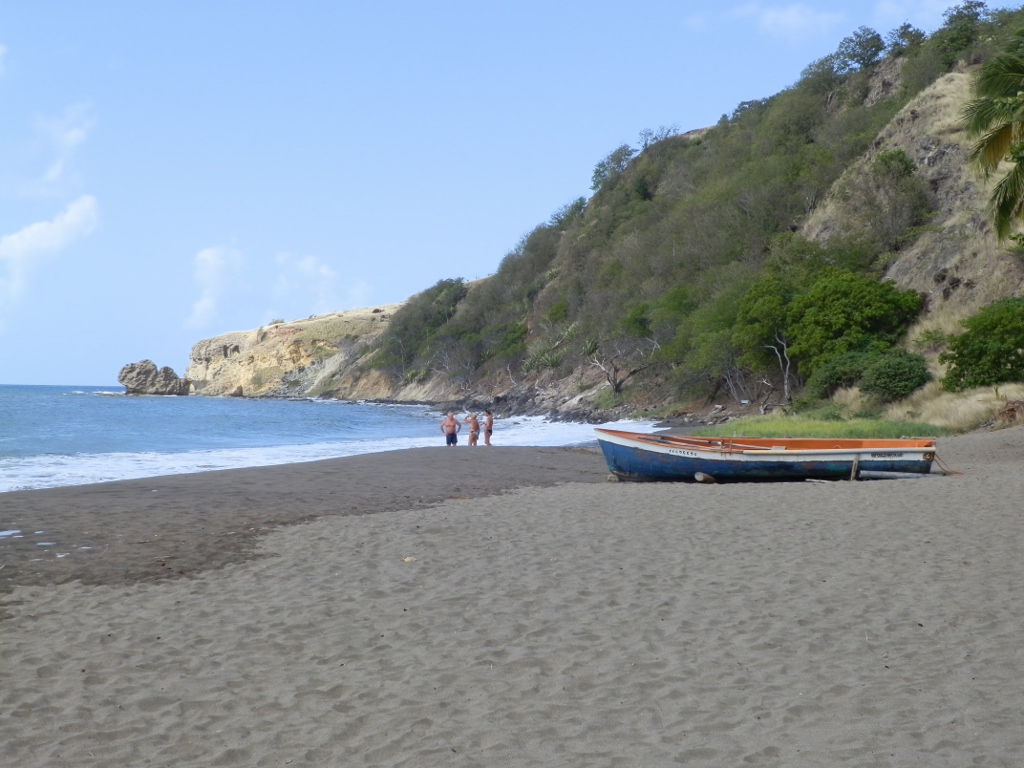 Petite Anse
Petite Anse
When I looked to the other side, the situation was no better.
 Petite Anse
Petite Anse
However, as I was revolving there, the cloud that had hidden the Sun moved and the beach got a completely different appearance.
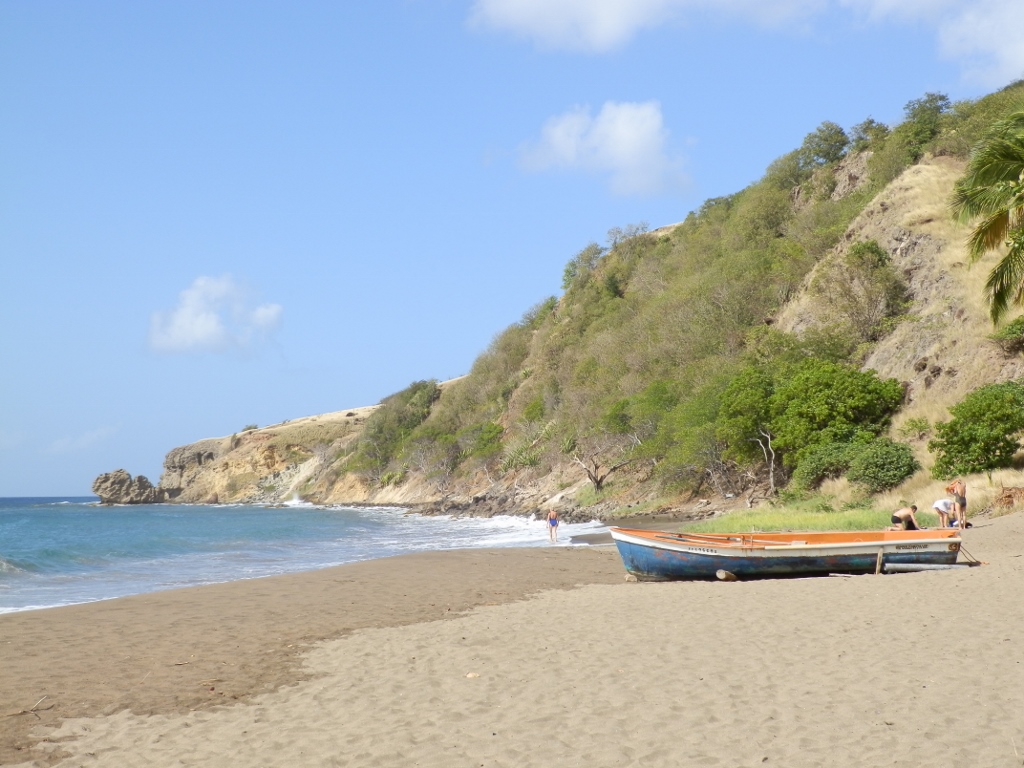 Petite Anse
Petite Anse
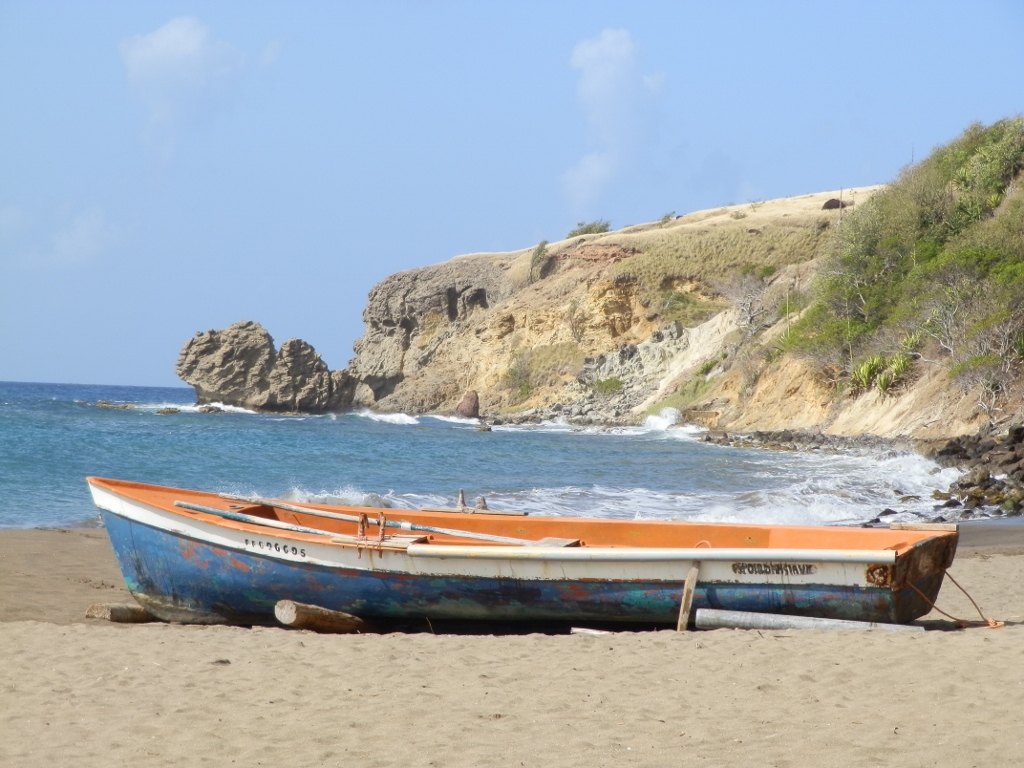 Petite Anse
Petite Anse
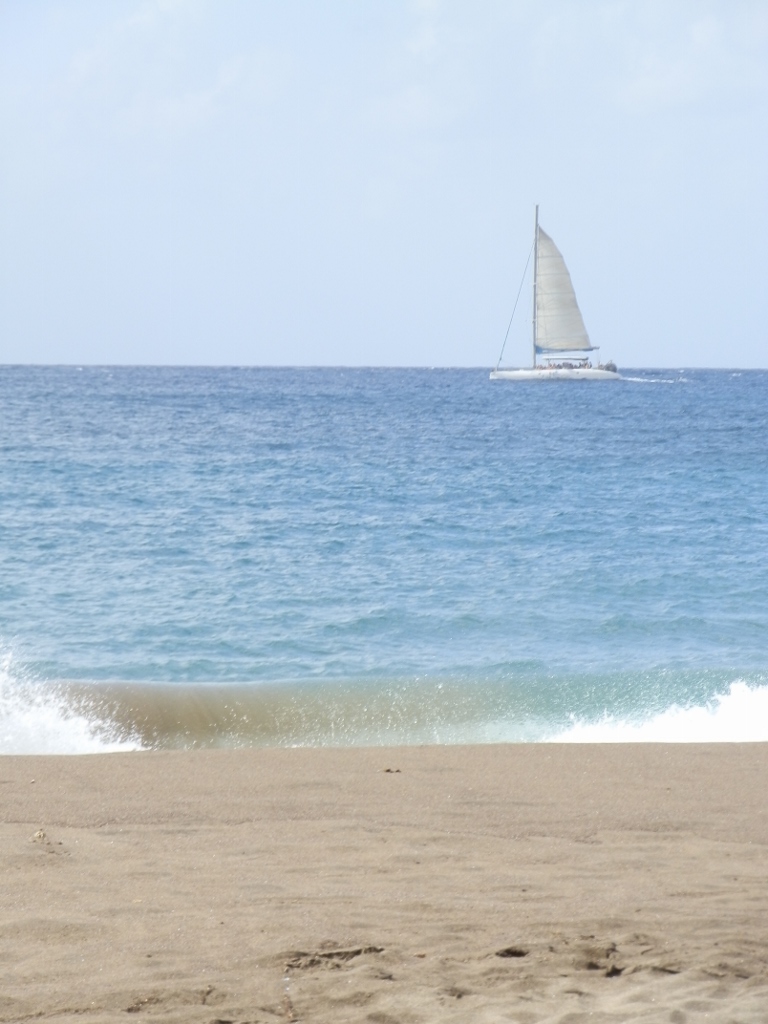 Petite Anse
Petite Anse
As it may be seen from the photos, there was practically nobody on the beach and there were no sailing-boats in the cove either. It was obvious that this cove was more open to the currents and the winds, which did not make it suitable for the parking of sailing-boats as was the case in Grande Anse d’Arlet.
Although I had my swimsuit on, I didn’t feel like swimming here either. The temperature was great, there was no direct sunlight all the time, in other words there was not too much danger of getting sunburns over a short period of time, but I was not at all inspired on this day. So, I just continued walking along the beach.
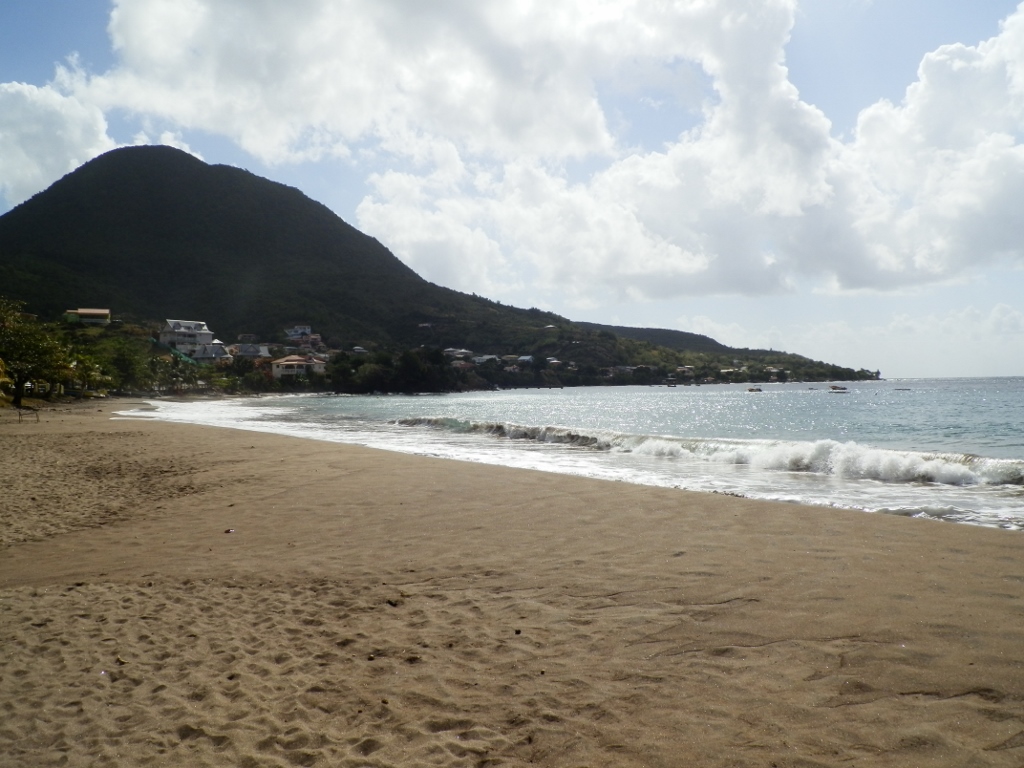 Petite Anse
Petite Anse
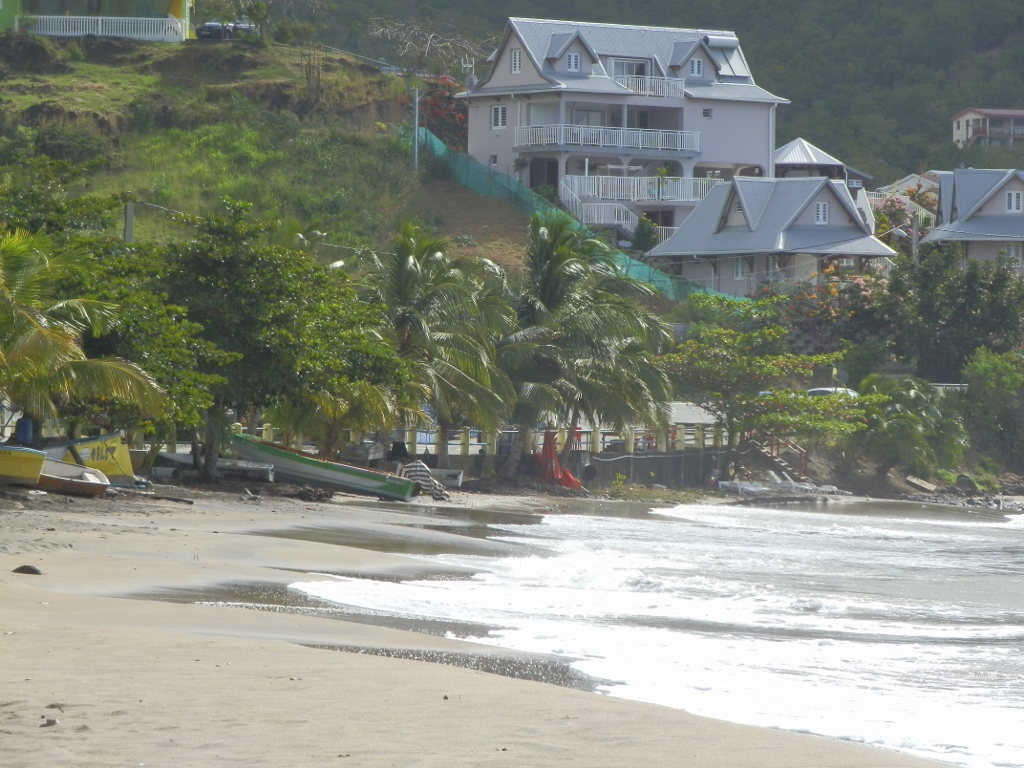 Petite Anse
Petite Anse
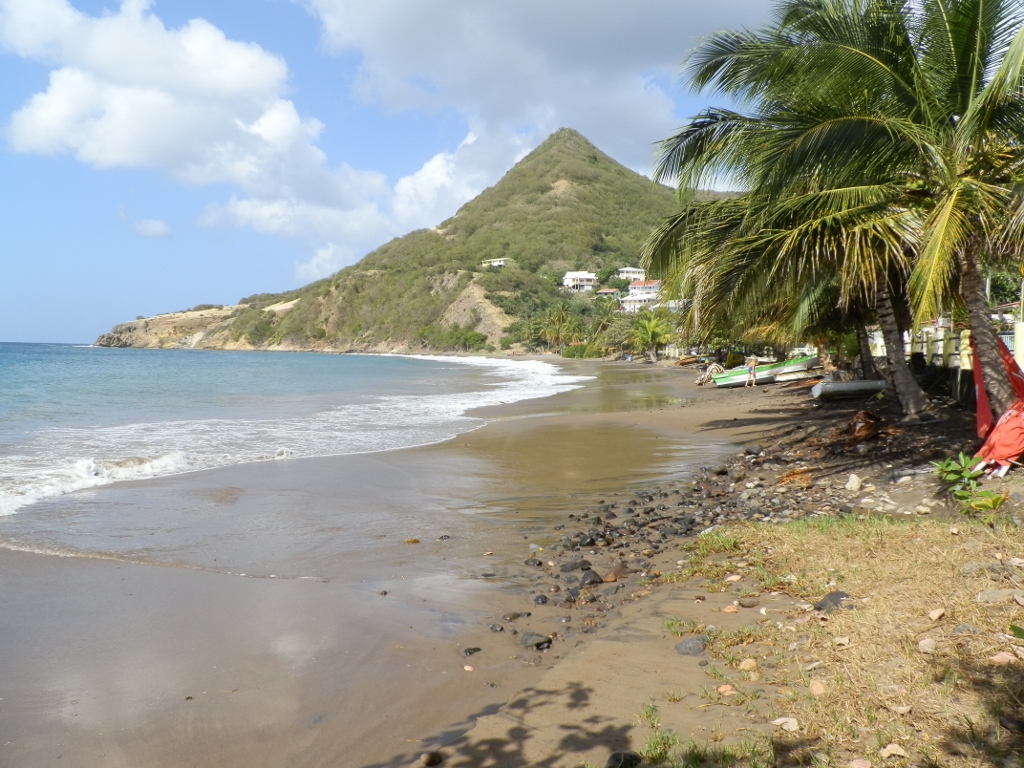 Petite Anse
Petite Anse
From the beach I followed the same street down which I had come, this time to get back to the intersection with the main road and there I sat in a café to have a coffee, since I had absolutely no reason to be in any hurry. At the same time I realised that I would obviously be visiting beaches of the same type the entire day, which meant I would not be swimming at all, but I was not preoccupied in the least.
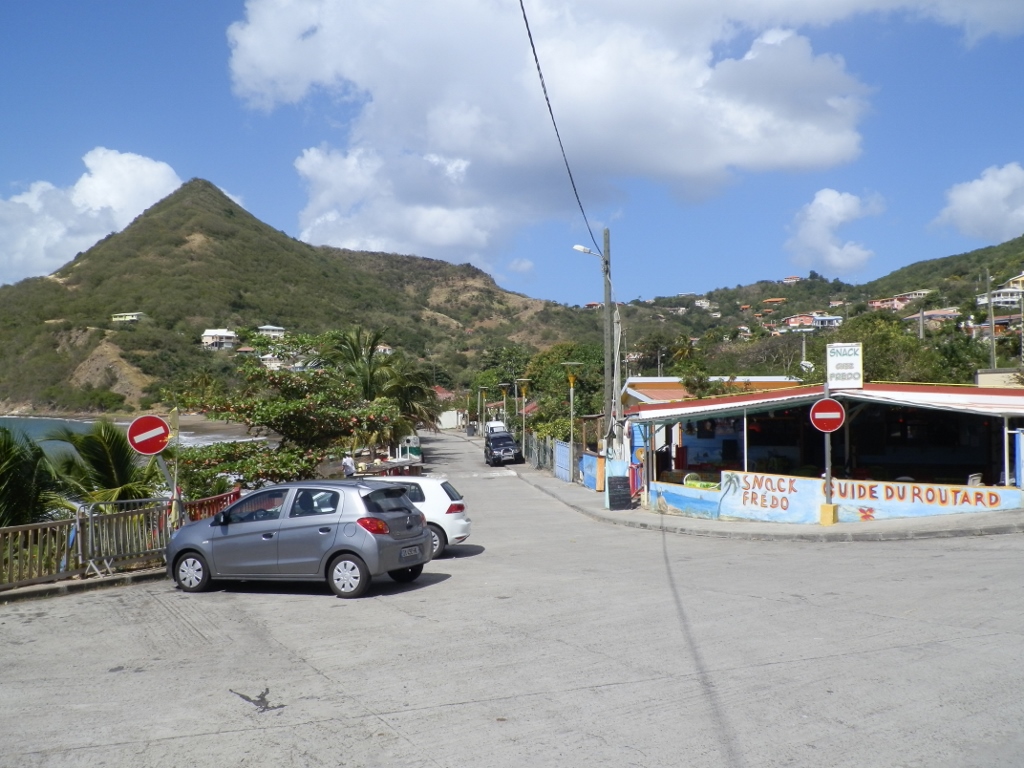 Petite Anse’s shore: the sea is to the left, the street is in the middle and the café is to the right
Petite Anse’s shore: the sea is to the left, the street is in the middle and the café is to the right
After the coffee break I started walking slowly beside the road with an intention to hitch-hike, but I also kept looking around.
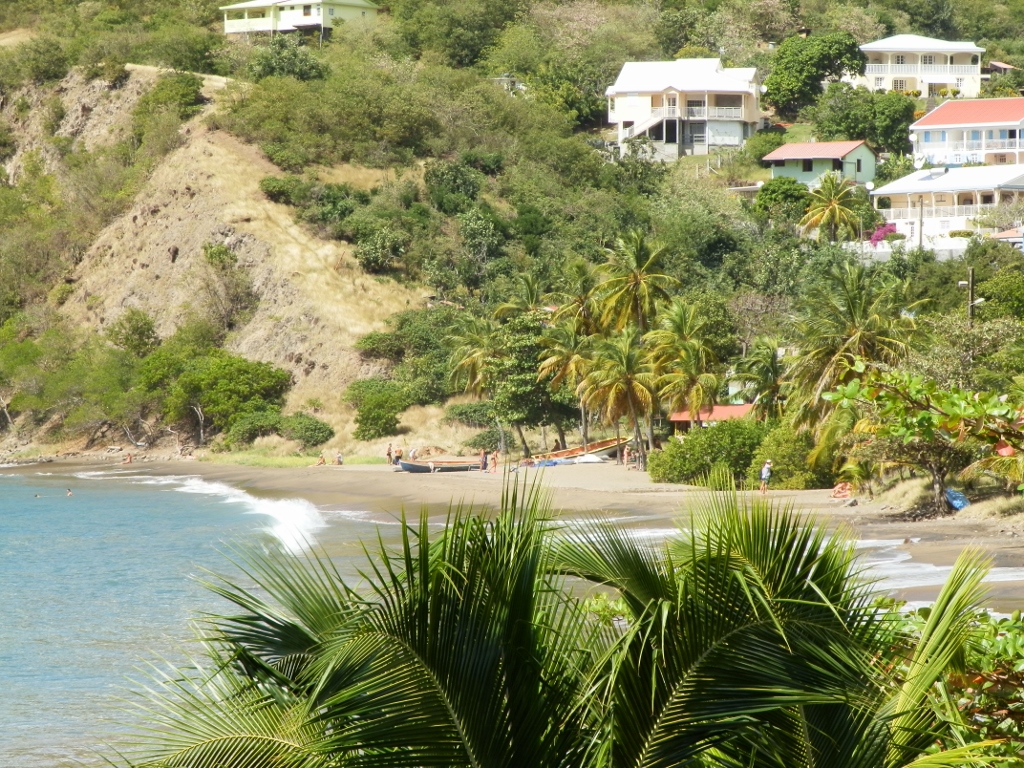 View at Petite Anse from an elevation
View at Petite Anse from an elevation
Thus I also took photos of numerous large houses that obviously have apartments to rent to tourists.
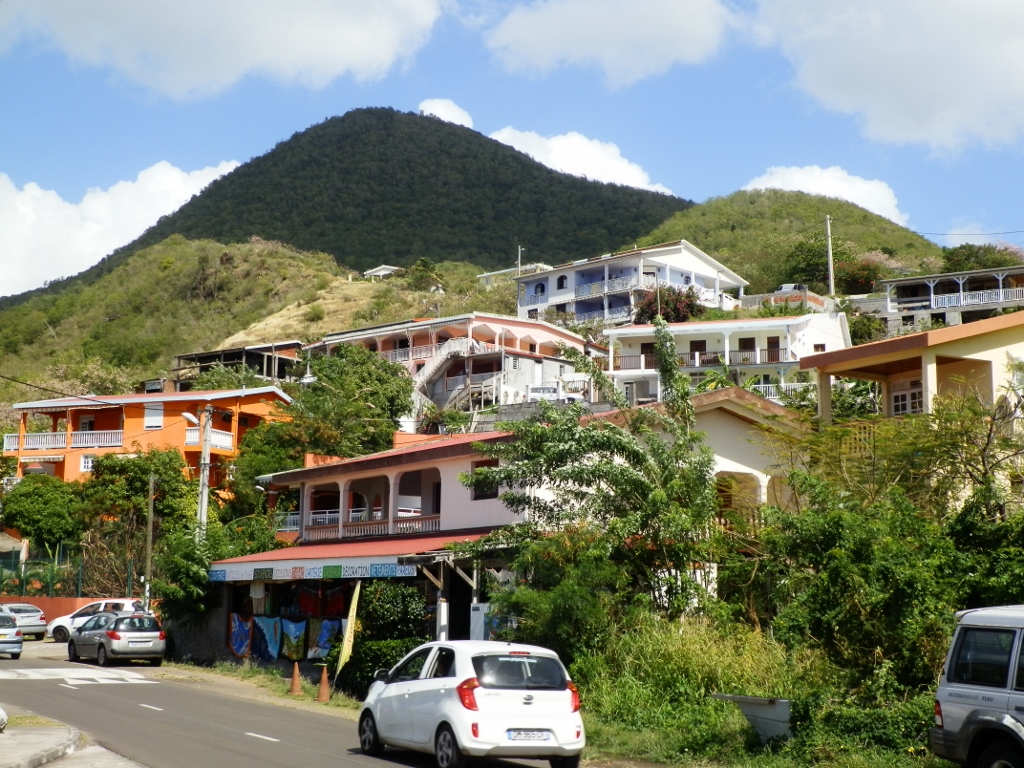 Surroundings of Petite Anse
Surroundings of Petite Anse
Well, perhaps the beaches and the sand on them did not create in me the associations usually linked to the tropics, but the lushness of the vegetation was certainly impressive.
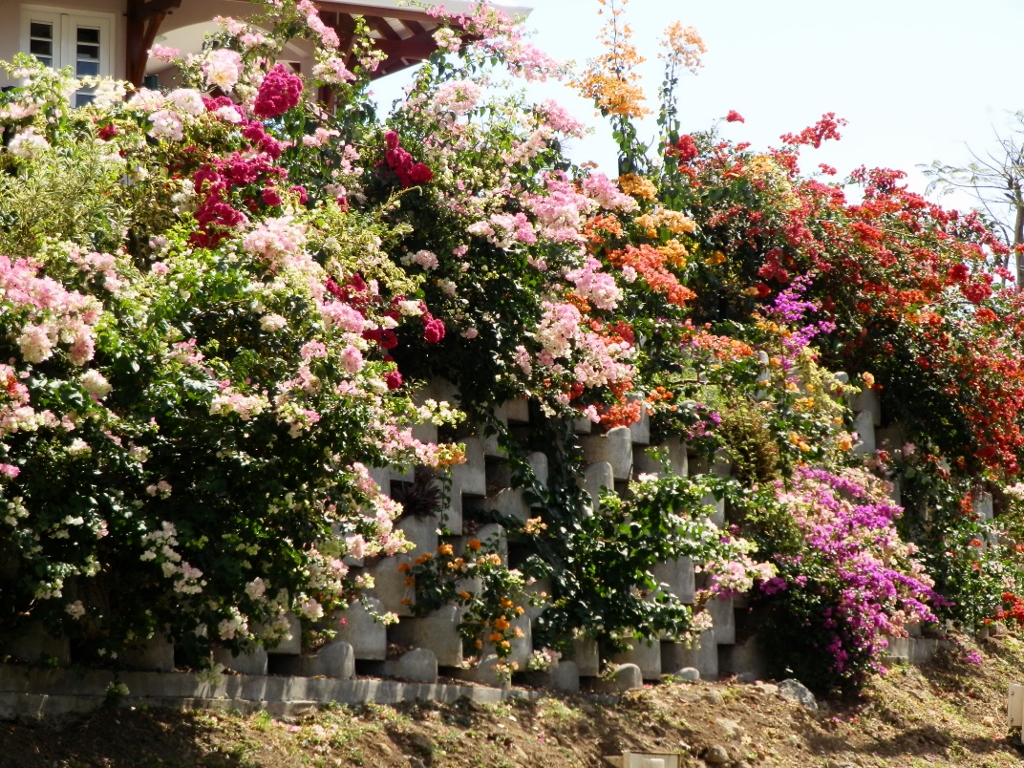 Flowery fence close to Petite Anse
Flowery fence close to Petite Anse
After my short walk, a car stopped and I continued in it towards town Le Diamant. Since I had realised that I was not bad with the hitch-hiking at all, I felt confident enough that I did not take advantage of the favourable ride to go directly to town Le Diamant, but rather I asked the driver to let me get out at an extension of the road where on an elevation above Pointe Diamant there is a viewpoint. I thanked him for the kindness and at the given spot got out of the car.
From that elevation, there is a very nice view at Diamond Rock (Rocher du Diamant). This is a 175-m high basalt island.
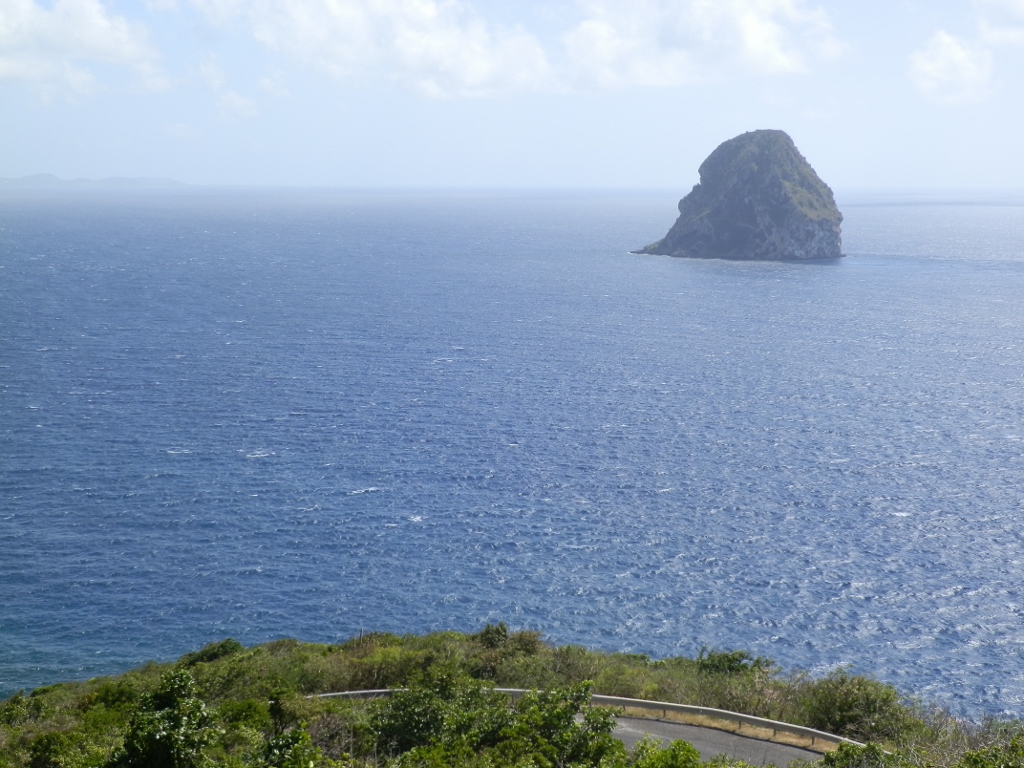 Diamond Rock
Diamond Rock
From that point there is also a fine view at the spacious Grande Anse du Diamant beside which there is Le Diamant town.
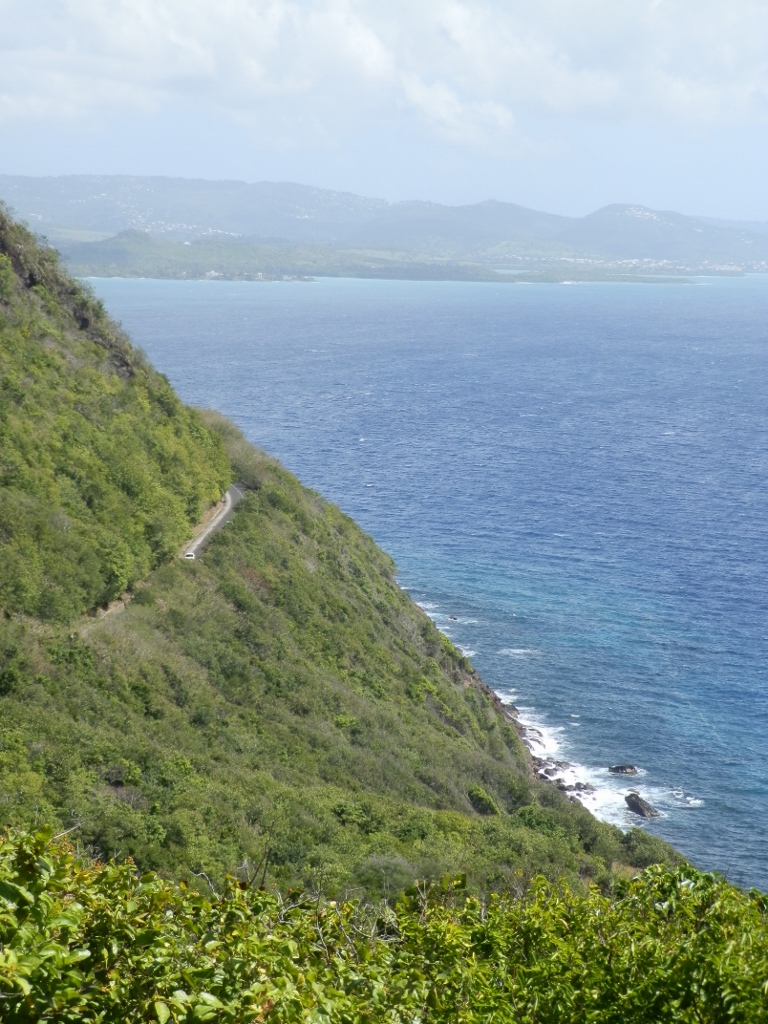 Road leading to Le Diamant and the waters of Grande Anse du Diamant
Road leading to Le Diamant and the waters of Grande Anse du Diamant
Encouraged by my successful hitch-hiking, after the photo-break, I transferred by the next car some 2 km farther and there I got out of the car beside a grassy expanse where there is the Anse Caffard Memorial.
The historic data show that on 8 April 1830, around noon, a ship was doing some strange manoeuvres close to Anse Caffard (at the end of Grande Anse du Diamant) and around 5 pm it anchored there. A man from the shore, Francois Dizac, manager of the local estate, saw the danger since these waters are full of rocks, as well as strong currents, but because of the rough sea he could not row to the ship. He kept sending some signals from the shore, but apparently the ship’s captain did nothing. All in all, around 11 in the evening, there were sounds of the shipwrecking and the cries of the passengers. With a group of slaves who worked on the estate, Dizac could only watch from the shore as the people from the ship one by one disappeared in the choppy waters of Anse Caffard (I guess the night was cloudless).
46 bodies were found at dawn of the next day and it is interesting that to this very day the historians have not succeeded in figuring out what the name of the ship that was destroyed that night was or the flag under which the ship sailed. What is known, however, is that a number of those perished were slave traders (four of them) and they were buried at the cemetery of Le Diamant, while the rest were the bodies of African slaves and these were buried close to the shore.
On the other hand, 86 prisoners (26 men and 60 women), all Africans, were saved and they were transferred to Fort-de-France. On the basis of the testimonies of the survived slaves, it is presumed that there were over 300 people on the ship. Those who were not found dead or alive had disappeared in the waters of Anse Caffard and Grande Anse du Diamant.
It is also interesting that the French actually did not know what to do with these 86 Africans on Martinique. Because of some laws at the time, these people could not be considered slaves, but they could not get the status of free people either. For this reason, the authorities deported them to Guyane in July 1830. I don’t know what happened to them afterwards, but I presume nothing nice.
After 150 years, a monument was built here that should remind us of humanity and that should celebrate love and equality among people, all inspired by the inhumane relation of one group of people towards the other. Well, it’s all nice and fine that somebody thought of marking this, but it does not seem sufficient to me, although even some great apology could not be proportionate to the horror which traders and those who used slaves did to these poor people who were incessantly without their will brought to the new world primarily from Africa.
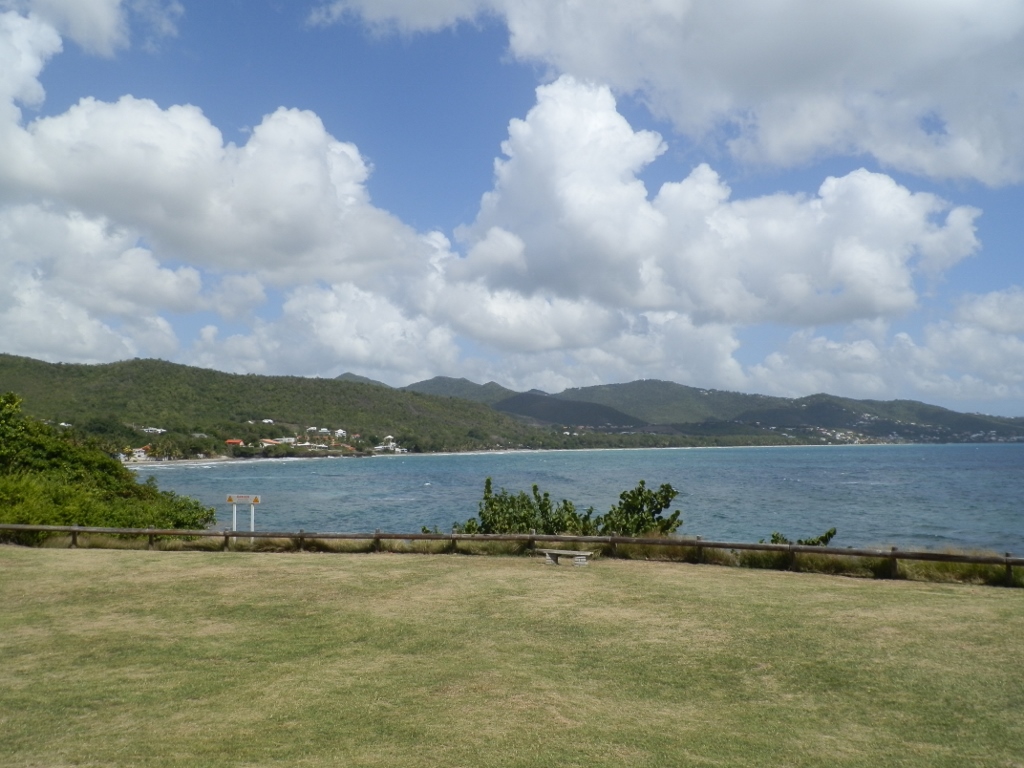 Anse Caffard Memorial: a clearing which is a part of the memorial and which faces Grande Anse du Diamant
Anse Caffard Memorial: a clearing which is a part of the memorial and which faces Grande Anse du Diamant
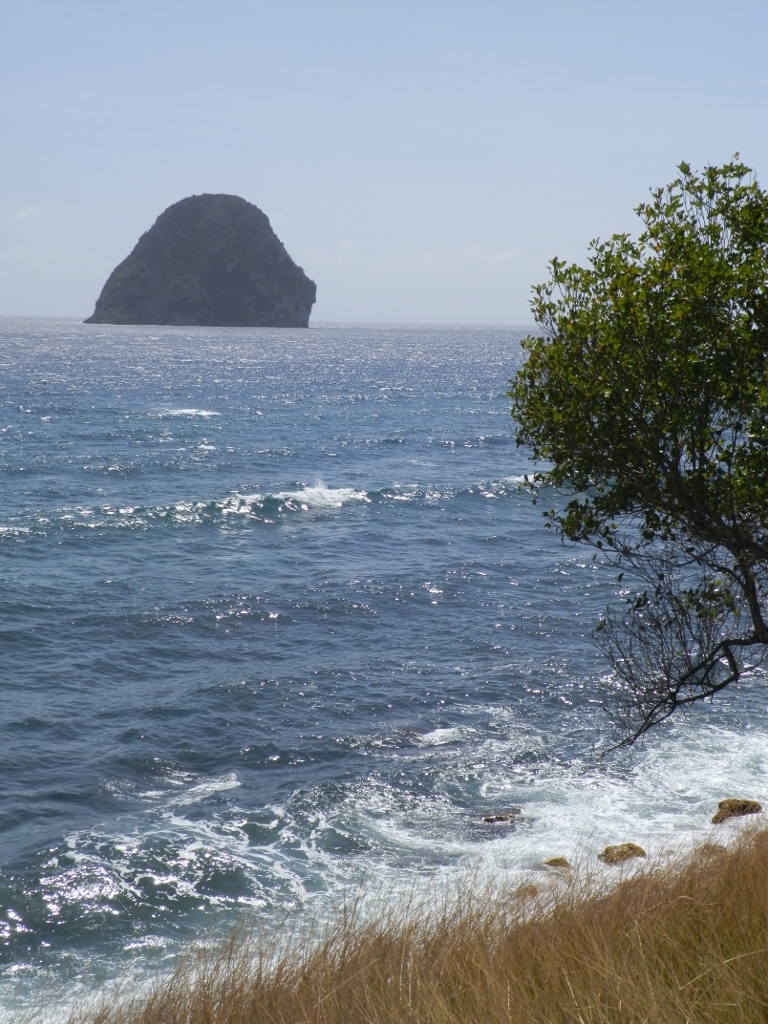 Anse Caffard Memorial: view at the rough waters and the Diamond Rock
Anse Caffard Memorial: view at the rough waters and the Diamond Rock
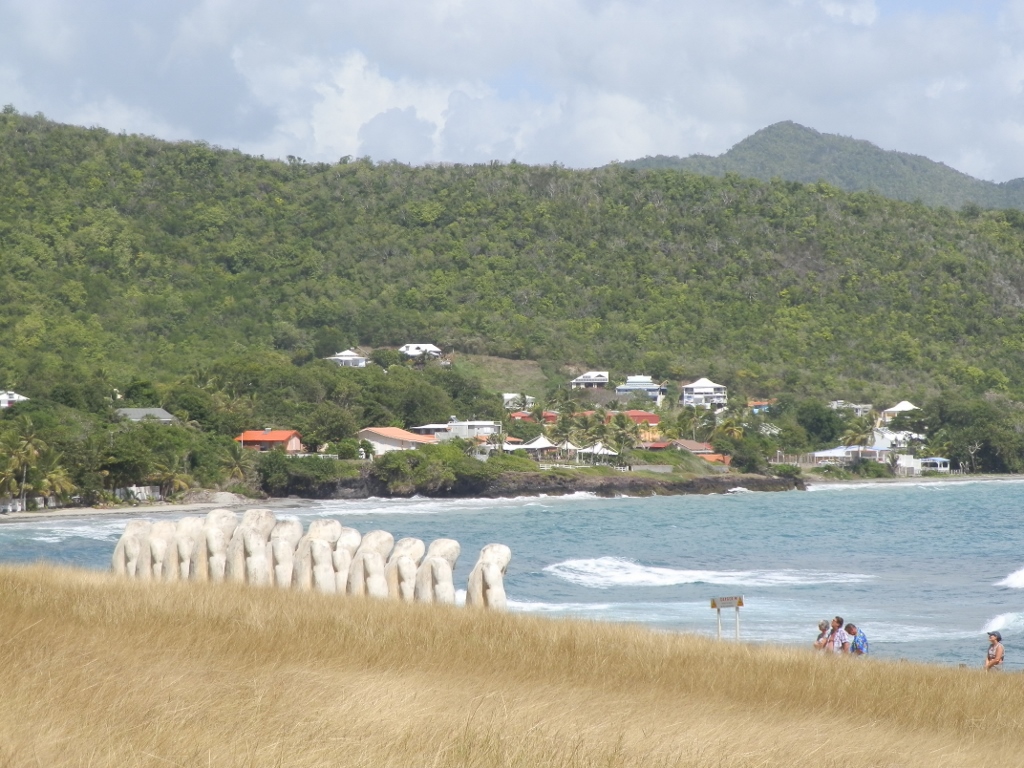 Anse Caffard Memorial: the monument and some visitors
Anse Caffard Memorial: the monument and some visitors
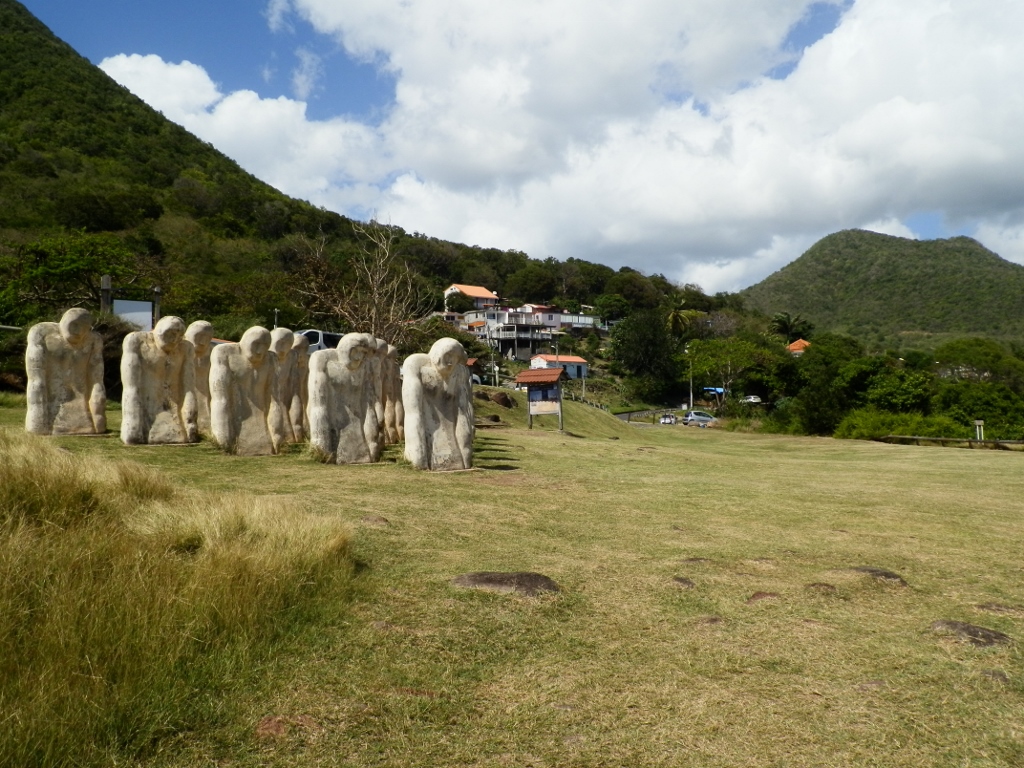 Anse Caffard Memorial
Anse Caffard Memorial
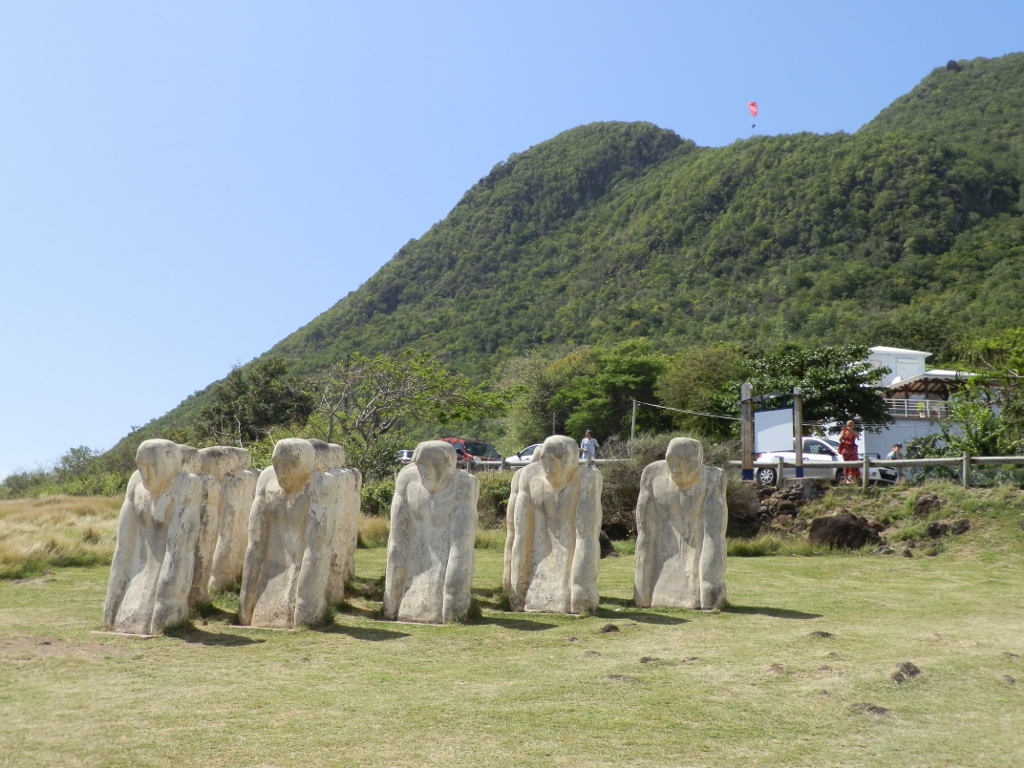 Anse Caffard Memorial
Anse Caffard Memorial